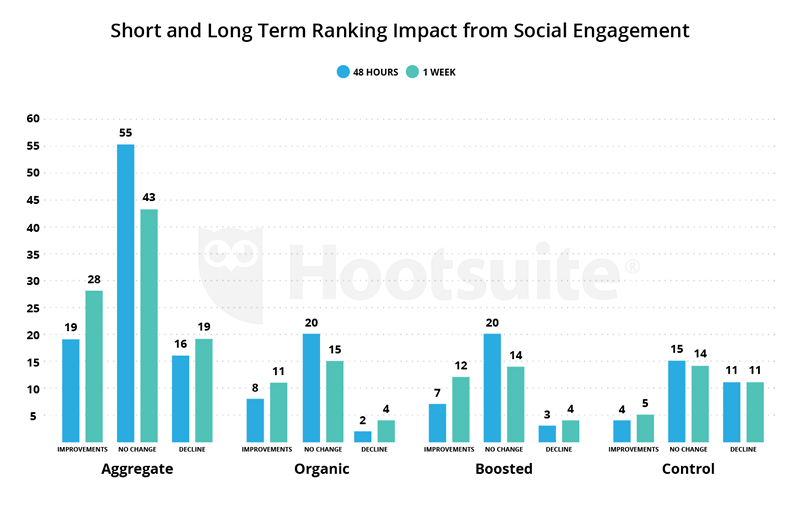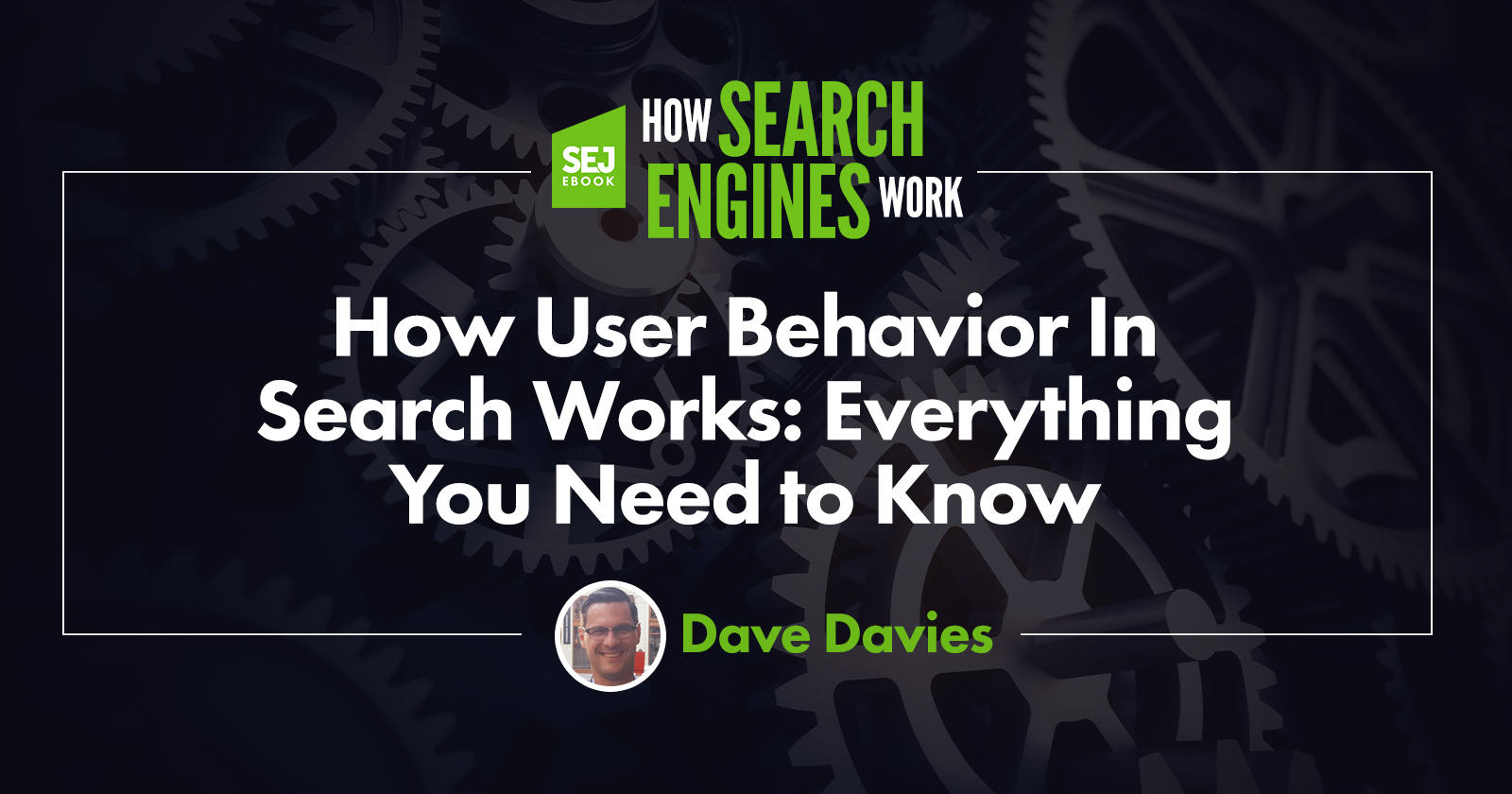In this age of search, it’s not enough to know what ranking signals may-or-may-not be at play.
You also need to understand the environment in which those signals operate.
This chapter will look at how user behavior is – and isn’t – used by search engines.
Unlike the previous three installments, which focused on principles, this post will rely on more specific examples and applications.
Most of this chapter will discuss Google because they are the leader in this space, but the principles also can be applied to Bing.
User Behavior Signals the Engines Don’t Use
Before we dive into how user behavior impacts search, let’s make sure we’re all clear on what user behavior does not impact.
Google Analytics
Having Google Analytics on your site does not impact search one way or the other.
When asked about whether there was a penalty for removing Google Analytics on June 28, 2018, Google’s John Mueller responded:
Just to be clear: there's no penalty for using or not using GA with regards to search.
— 🍌 John 🍌 (@JohnMu) June 28, 2018
Now, I’m not saying that you should take everything Google says at face value, but this is a repeated response and it makes sense.
Not all website owners/webmasters/SEO professionals use Google Analytics. If Google used their analytics platform to determine success and failure metrics of your site specifically they would essentially be comparing apples-to-oranges.
Your individual user metrics (as reported or detected by Google Analytics) are not used specifically for or against you.
Social Media Likes, Shares & Comments
The notion that the number of likes, shares, followers, etc. on Facebook (or Twitter, or Instagram, or any other social media platform) has been refuted repeatedly by Google. Again, this makes perfect sense.
Google has clearly stated that social signals are:
- Too easy to manipulate.
- Unreliable because it’s impossible to consistently get all the available content/data from these platforms.
To be balanced, I do need to reference a Hootsuite study from 2018 that found a correlation. This study was limited to Twitter and 90 pages of content divided into three groups:
- No promotion: The control group. No organic tweets or paid promotion for 30 articles.
- Organic promotion: Thirty articles were promoted via organic tweets.
- Paid promotion: The remaining 30 articles were organic tweets that were then boosted.
The result was:

Basically, both sets of pages tweeted showed stronger ranking improvements in timeframes that were too short to be attributable to links.
I bring this up not to confuse the issue but to provide full data.
Google has said they don’t use it as a metric and this is likely true. So how can it be that the evidence above illustrates the opposite?
First, the data is not conclusive at its scale, which is mentioned in Hootsuite’s article. It’s more likely that what we’re seeing here isn’t Twitter impacting a ranking, but rather the reinforcing of entity relevancy.
Hashtags and keywords tied to an entity and then being associated with the page referenced in the tweet.
To this end, it’s not that it was Twitter or any other site, it’s simply that we’re seeing a non-link-based entity reinforcement resulting in a ranking improvement.
Something that matches well with everything we’re seeing in patents and hearing from Google.
User Behavior Signals That Search Engines Can Use
Now that we’ve covered what user signals the engines don’t use (or at least some of the core aspects I hear discussed on a regular basis), let’s look at the type of user behavior signals that search engines can use.
Clicks & Post-Click Behavior
While Google has stated correctly that they don’t use Google Analytics to gather signals to use in ranking a page that doesn’t mean they don’t use post-click signals at all.
Google knows:
- Which sites users click on in the search results.
- How long a user was at the target site before they returned to Google.
- What users did next.
So essentially, we have four core possibilities Google can use:
- A searcher clicks to your site in the search results and quickly returns to the engine and clicks on the next link. This would be a clear indication that the searcher believes the query is right and the result wrong and send a negative relevancy signal to the engine for your page as it relates to that query.
- A searcher clicks to your site in the search results, sticks around for a good deal of time, and then returns to the engine and clicks on the next link for the same query. This would likely send a positive relevancy signal to Google for that query and indicate that the user found content of interest and is simply looking for additional information or options.
- A searcher clicks to your site in the search results and after either a long or short period of time returns to the engine, refines their query, and searches again. This would indicate to the engine that the user themselves may not have been as specific as they needed to be and not apply a good or bad relevancy to your site.
- A searcher clicks to your site in the search results and, after either a long or short period of time, returns to the engine and completely changes their query. This would indicate that they found what they were looking for and moved on to a different task. This would pass a positive relevancy with this signal.
While these signals will obviously depend on factors such as the query type and user behavior patterns, this serves as an illustration of the types of signals that can be gleaned from your click data.
We can expect to see a lot more of this as machine learning systems get more and more sophisticated. I wouldn’t be surprised if it became a core signal for ranking sites as little else can confirm the success or failure of a SERP placement as well.
Reviews
No discussion on user behavior as a ranking signal would be complete without mentioning reviews.
As SEJ’s Matt Southern discussed back in November of 2017, reviews are the most prominent signal as it relates to local search. You can read the full article here.
This is a direct example of Google using a user behavior signal directly.
There are also patents that discuss the use of location as a signal in the capacity of having run a query for a product or service and then detecting via Android or other systems that you ended up there, thus confirming the fulfillment of your intent.
Using your location as a review and taking into account whether you have passed other businesses offering the same service or product and strengthening the value of that signal if you did (i.e., if you’d travel farther to engage with a specific location it must be superior).
Google Analytics – Possibly

I know I noted above that Google has said they don’t use Google Analytics as a ranking signal and that’s correct. But that doesn’t mean they don’t use it to create ranking signals.
Google could use Google Analytics to understand how:
- Websites are used.
- A successful site is structured compared to an unsuccessful one.
- Users interact with the website, and then apply that understanding as signals globally.
To be clear, there is a reason that I put “possibly” in the heading of this section. I am not certain.
From the way things are worded in their denials of the use of Google Analytics, it seems probable.
Even if they aren’t using it today due to complexity, it’s definitely something a little machine learning could make feasible and help Google predict with a higher degree of certainty whether a new webpage or website will satisfy a searcher’s intent.
And Really This Is Just the …

The purpose of this series has been to lend insight into the approach search engines are taking to search and how they rank pages, not to discuss specific strategies.
In the case of user behavior metrics, this was easiest done will examples. Don’t be satisfied with what you’ve read above, though. They were just examples.
Here’s what you must always remember:
The user is the reason.
If an engine can understand what a user’s intent is, and that the likelihood is of that intent being met by a specific webpage or website, they have grasped the Holy Grail.
We’ve seen how an engine can (or in some cases simply may) use a visitor’s behavior as a search signal, but clearly this is an end goal.
What we need to do now is to understand how every user action could be measured and weighted. If this can be done in a manner that could be applied globally, it will almost certainly be used as a signal in some capacity.
To do this you need to consider:
- What technologies are at play.
- What it’s limitations are.
- How the signals they provide can be aggregated.
- Whether it either is, or will be, a signal.
The best part?
In this quest, there’s always a chance you may be wrong.
You may be considering a user behavior that a search engine isn’t using.
And in that wrongness, you will be focusing on sending positive user signals and creating the experience that would generate them.
Even if the engine doesn’t thank you directly … your bottom line will.
And isn’t that the point?
Image Credits
Featured Image: Paulo Bobita
Social Engagement Graph: Hootsuite
Loren Baker: Ungagged UK YouTube Channel
Iceberg: Adobe Stock





